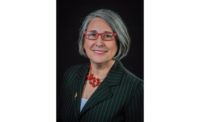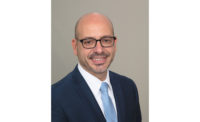Q&A with Celia Besore, TMA’s First Female Executive Director

On Oct. 2, The Monitoring Association (TMA) announced that Celia Besore would be its next executive director (and the first ever female to hold the position at TMA). Previously the executive director of the National Association of Hispanic Nurses and a former member of the board of directors of The American Society of Association Executives, Besore is no stranger to holding a leadership role. And having already served as TMA’s vice president of membership and programs and vice president of marketing and communications, she’s familiar with the security industry as well.
So just days before starting her new role at TMA, Besore spoke with SDM about her love for the security industry, her past experiences and the future of the association.
What do you consider to be your key accomplishments in your first term with TMA (then called CSAA — Central Station Alarm Association)?
I was very lucky to be involved in the beginning of many of TMA’s valuable programs: the online courses, the Five Diamond Program, a precursor of ESX called NAMTSE, the first webinar and I was even involved with the introduction of social media to the association. I was really very excited when I came back and saw that many of the programs I felt very committed to were still going and thriving.
What are you looking to accomplish both in the short and long term of your new role?
I’m going to promote the association — our mission, who our members are, our programs and so forth. Then I want to grow the association not only in the number of members, but also breadth. We’re still the association for the large integrators, but we’ve also now expanded our membership to include anyone that offers monitoring, whether they do it on their own in-house or have a third party doing it. So we need to figure out ways to get the word out and develop the programs for this new group of companies that are coming into the association. One of my short-term goals is to continue doing something I have already been doing, and that’s having conversations with members where we talk about what they find valuable about TMA and get some ideas of things they feel we should be doing with our members. A lot of my knowledge comes from talking to the members. Another thing that our association is very committed to, and I’m excited to get more engaged in, is our ASAP to PSAP program. When I first came it was moving, but I have seen the growth in the last year and a half. There are so many issues facing the industry, and there will always be different issues, so I’m wanting to make sure we are seen as a forum where our members can discuss what’s happening and find new approaches and solutions to some of the things that are happening. Companies on their own try to find solutions, but when there’s a whole industry working together, I think the solutions are practical and more creative than those people working on their own find.
You left the association at one point to work as the executive director for the National Association of Hispanic Nurses. Why did you leave and what brought you back?
It was very hard to leave because I had been here for 11 years and done so many great things, but I felt I was ready for the next challenge. I wanted to be a CEO, and when I applied for the National Association of Hispanic Nurses, I got the job. They had a double mission which really appealed to me, which was to increase the number of Hispanic and other minorities in nursing and also to provide them with the resources they need to progress in their careers. We also provided programs in underserved communities. After six years though, I felt that I had contributed as much as I could with their growth, financial stability and further recognition, so I decided it was time to do something different and come back to TMA.
How does it feel to be the first female executive director of TMA?
I was thrilled and very honored to be chosen, but I also have a very strong sense of the responsibility I now have. Being chosen as the first female executive director is kind of a reflection of the values of TMA. I’ve always felt passionate about the association because of the caliber and the type of people that are the members. It’s funny because many people think our association is a good old boys club, and if anything shows this isn’t, it’s that they hired me, a woman, to lead the association. From my first day in 1999, I always felt those in the association listened to my ideas and supported me. One of the founders of our association was a woman, Sarah Jackson, and she was a very prominent figure in our association and in the industry overall. And the real pioneer was Pam Petrow, former TMA president. I’m really happy to follow in the steps of so many of these people.
What advice would you give to women trying to break into the security industry?
I think that everyone, including women, needs to work hard, learn the craft, be persistent, take calculated risks, get out of their comfort zone and volunteer to take on projects that might be a little scary at the beginning. But also reach out to other women in the industry.
Do you think the security industry should make a conscious effort to hire more women, or do you think it is something that needs to happen organically?
Our industry, like many other industries, is faced with a lot of challenges. I know one of them is a lack of people that are interested in the industry. Companies need to hire the best person for the job, and they should look at people regardless of their gender or ethnic background. There are studies that have shown that companies that have diversity are more creative and more successful. So we need to find ways to connect with people that are diverse. The structure and the demographics of the U.S. are changing, and I believe that associations as well as companies need to reflect the people they are serving.
What were some of the key messages from this year’s annual meeting?
The feedback we have gotten has been extremely positive, which obviously makes us very happy. There were two big themes around the annual meeting. The first was one had to do with the state of the industry. Despite the concerns we sometimes hear about our industry, both the TMA/TRG Associates Attrition report, as well as the company valuation presentation given by a panel composed of some of the most-respected M&A consultant/bankers indicated that this is still a very vibrant industry. The other takeaway was the importance of trust, not only at the individual level of how you interact with people around you, but also how the lack of it harms the performance of a company or an institution.
Do-it-yourself and monitor-it-yourself security systems are a hot trend right now — how is this affecting the professional monitoring industry?
Last year we did a survey with our members to get their impressions on do-it-yourself and monitor-it-yourself systems. I was pleasantly surprised to see that many of them saw it as a potential opportunity. Of course people are concerned, but I think the companies that understand there is going to be change and are looking for ways to navigate that change will do better than the ones who don’t want to realize that change is going to happen.
What is the monitoring industry doing to be more cyber secure?
That’s definitely a question we hear a lot from our members, so we’re offering educational opportunities for them on the topic. We’ve done a lot of presentations and webinars on the importance of being prepared, what to do if you are attacked and what are the next steps. Another thing we’re doing at TMA this year is launching a cyber security course, so we’re really excited about that.
What do you think the biggest opportunities and challenges will be for the security industry in 2019?
This question is hard because everything is happening so quickly. But change is going to continue — there will continue to be a lot of mergers and acquisitions in the industry. I see that our members are getting more and more engaged in providing different services to their customers because they want to keep them. So I see that the change is going to continue and most likely accelerate, both on the opportunity side and also for the challenges. I think the biggest challenge is how we can develop new business models. While we care about the industry obviously but our members are our first responsibility. We need to figure out as an association ways that they can weather and thrive among these changes. Most people will have to change quickly, and some will do it well and some won’t, but we’re rooting for the success of our industry.
Looking for a reprint of this article?
From high-res PDFs to custom plaques, order your copy today!






